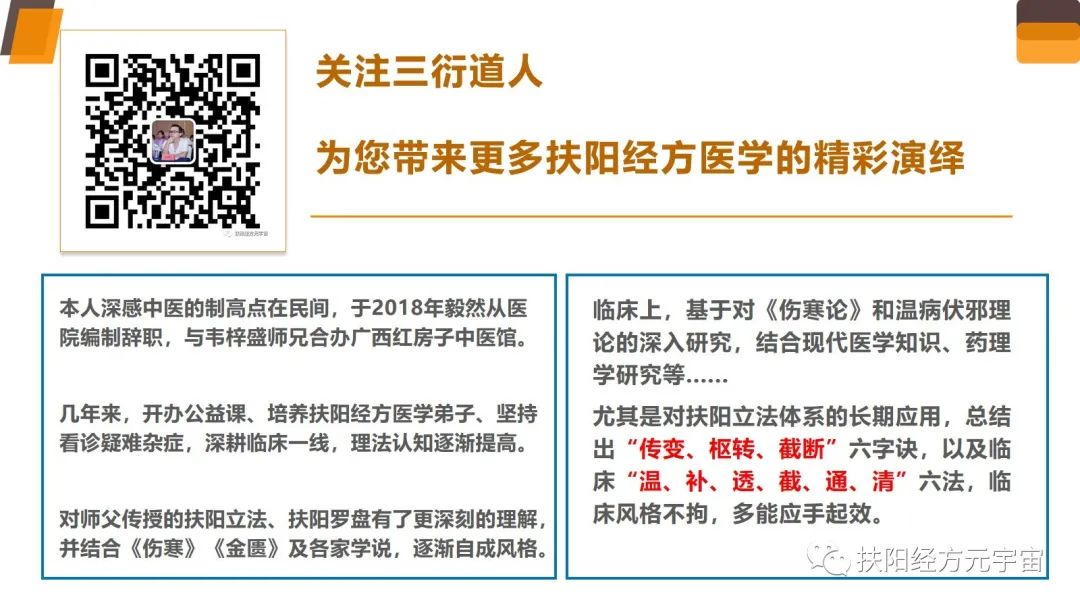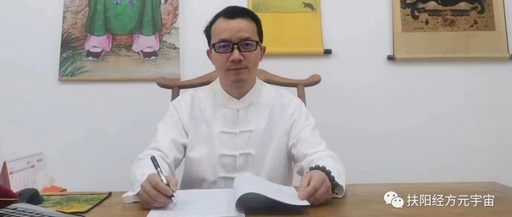Master San Yan discusses Febrile Diseases

Starting today, we will study the texts of the “Treatise on Febrile Diseases” (Shang Han Lun). Due to my historical background, I am formally trained in a traditional Chinese medicine (TCM) academy and have worked for nearly ten years as a physician in the gastroenterology department of a provincial TCM hospital. As everyone knows, TCM hospitals often use both Chinese and Western medicine. I have also learned from masters in the community.
Because I have experience in TCM, Western medicine, and traditional practices, along with my personal lifelong pursuit of Daoism, astrology, and fortune-telling, my life experiences have shaped a unique style when discussing the “Treatise on Febrile Diseases.” I may alternate between TCM and Western medicine, or interpret TCM through a Western lens, or discuss spiritual aspects, or modern physics. In short, my goal is to clarify the concepts. If there are any omissions, I welcome scholars to point them out.
Article 1 of the “Treatise on Febrile Diseases”: The disease of the Tai Yang (Greater Yang) manifests as a floating pulse, with stiffness and pain in the head and neck, and aversion to cold.
This indicates that the pulse pattern of Tai Yang disease is primarily a floating pulse. We have learned in basic TCM that a floating pulse is a manifestation of the struggle between righteous qi and pathogenic qi, pushing the pathogen outward. However, many people still find this explanation abstract and difficult to understand. So, what is the material basis of a floating pulse? Please be patient; we will elaborate shortly…
The following articles classify the types of floating pulse associated with Tai Yang disease:
1. Tai Yang disease, with fever, sweating, aversion to wind, and a slow pulse, is called Wind Stroke.
This is a Tai Yang Wind Stroke, characterized by a floating and slow pulse.
2. Tai Yang disease, whether feverish or not, must have aversion to cold, body aches, nausea, and a pulse that is tight in both yin and yang, is called Cold Damage.
This is Tai Yang Cold Damage, characterized by a floating and tight pulse.
3. Tai Yang disease, with fever and thirst, but no aversion to cold, is classified as Warm Disease. If sweating has occurred and the body feels burning hot, it is called Wind-Warmth. Wind-Warmth is a disease caused by wind evil, and due to heat, it manifests as a rapid pulse, thus Wind-Warmth and Warm Disease are characterized by a floating and rapid pulse.
4. Cold Damage with a floating and slow pulse, with warm hands and feet, is associated with the Tai Yin (Greater Yin).
This is the pulse of Tai Yin disease, characterized by a floating and slow pulse, as Tai Yin is characterized by qi deficiency but still has yang qi, hence it presents as a floating pulse, but due to qi deficiency, it is a slow pulse.
Next, let’s look at how the sinking pulse is described.
The pulse of Shao Yin (Lesser Yin) disease:
1. In Shao Yin disease, the pulse is fine and weak, with a desire to sleep.
2. In Shao Yin disease, the pulse is fine, sinking, and rapid, indicating an internal condition, and sweating is not advisable.
3. In Shao Yin disease, the pulse is weak and fine, and sweating is not advisable due to the loss of yang.
The pulse of Jue Yin (Terminal Yin) disease: cold hands and feet, with a fine pulse that is about to disappear, is treated with Si Ni San (Four Reversal Decoction).
Thus, the pulses of Shao Yin and Jue Yin are already fine and weak, even to the point of being about to disappear. There can also be fine, sinking, and rapid pulses. Since it is fine and sinking, why is it rapid?
The various pulse patterns discussed above are used to determine the state of the body. So, what is the material basis behind these fundamental pulse patterns? What essence do the pulse patterns represent?
First, let’s look at a concept from Western medicine: shock.
Shock is a syndrome that occurs when the body suffers a strong pathogenic factor attack, leading to a significant reduction in effective circulating blood volume, widespread and sustained reduction in tissue blood flow perfusion, resulting in poor microcirculation function throughout the body and severe impairment of vital organs. At this point, the body’s functions lose compensation, leading to tissue ischemia and hypoxia, and an imbalance of neuro-humoral factors.
The diagnostic criteria for shock are:
① There is a cause that induces shock. ② There is altered consciousness. ③ The pulse is fine and rapid, exceeding 100 beats per minute or cannot be palpated. ④ The limbs are cool and moist, and the skin over the sternum shows positive signs (refilling time exceeds 2 seconds after pressure), with mottled skin, pale or cyanotic mucous membranes, and urine output less than 30ml/h or anuria. ⑤ Systolic blood pressure is less than 10.7kPa (80mmHg). ⑥ The pulse pressure is less than 2.7kPa (20mmHg). ⑦ For those with pre-existing hypertension, systolic blood pressure drops more than 30% from baseline. Anyone meeting the first criterion and two of the second, third, and fourth criteria, along with one of the fifth, sixth, or seventh criteria, can be diagnosed with shock.
So, what methods does Western medicine generally use to rescue shock?
To be continued…


